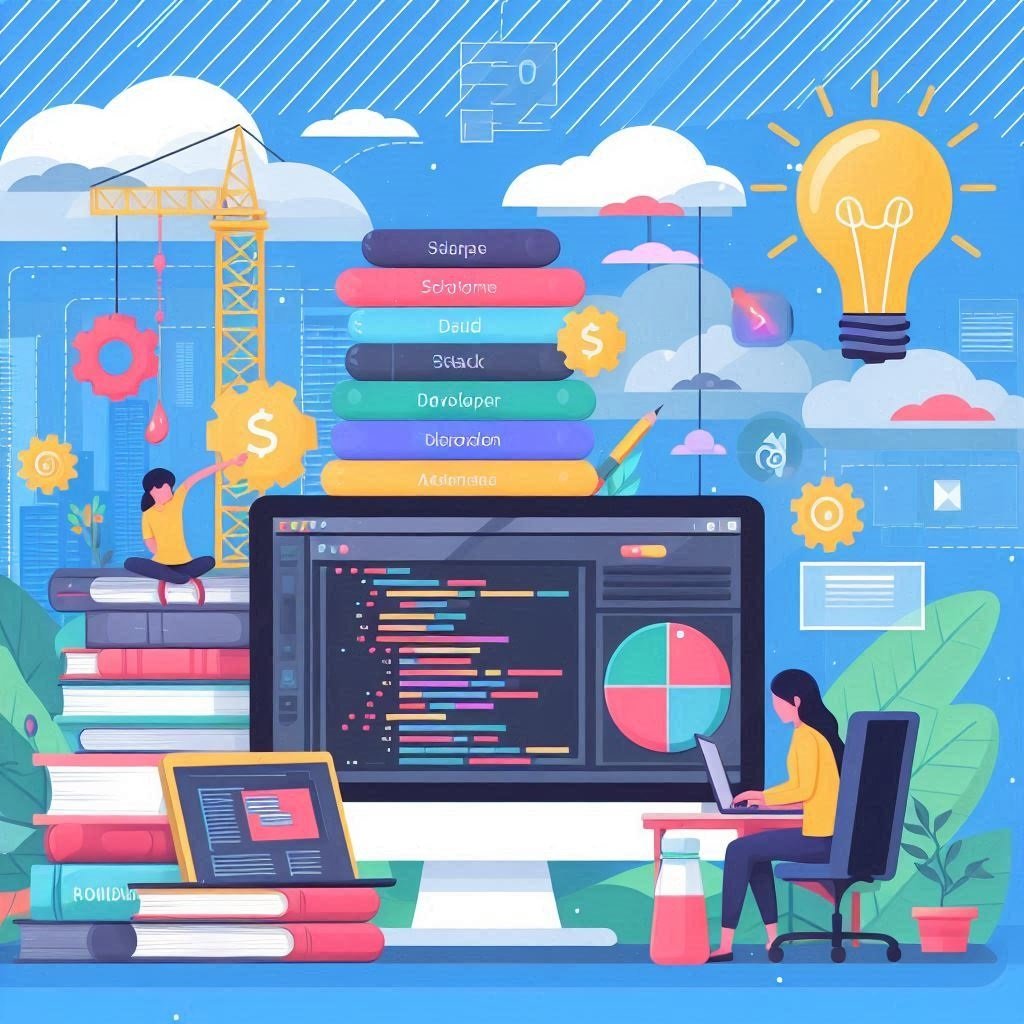Introduction
Are you ready to become a Full Stack Developer in 2024? If so, you’re about to embark on an exciting journey. Full Stack Development is a highly sought-after skill set in the tech industry. It combines the best of both worlds: front-end and back-end development. This guide will walk you through everything you need to know to master both sides of web development.
What is a Full Stack Developer?
A Full Stack Developer is a versatile programmer. They handle both client-side and server-side development. In simple terms, they work on everything that users see and interact with, as well as the behind-the-scenes logic and database management.
Why Choose Full Stack Development?
- Versatility: You’ll have the skills to build a complete web application from scratch.
- High Demand: Companies are always looking for developers who can do it all.
- Better Understanding: Knowing both front-end and back-end helps you see the bigger picture.
- Great Pay: Full Stack Developers are among the highest-paid professionals in tech.
The Path to Becoming a Full Stack Developer
Step 1: Master the Basics
Before diving into Full Stack Development, you need a solid foundation in the basics.
1. HTML/CSS
HTML (HyperText Markup Language) is the backbone of web development. CSS (Cascading Style Sheets) makes your web pages look good.
- HTML: Learn how to structure a webpage.
- CSS: Learn how to style and layout your webpage.
2. JavaScript
JavaScript brings your web pages to life. It allows you to create interactive elements like buttons, forms, and animations.
- Fundamentals: Variables, data types, functions, and loops.
- DOM Manipulation: Change the content and style of your webpage dynamically.
- Event Handling: Make your webpage interactive by responding to user actions.
Step 2: Dive into Front-End Development
Front-end development focuses on the user experience. It’s all about making sure your website looks good and functions well.
1. Advanced JavaScript
Once you’ve mastered the basics, it’s time to dive deeper into JavaScript.
- ES6+ Features: Learn about modern JavaScript features like arrow functions, classes, and promises.
- Frameworks and Libraries: Get familiar with popular tools like React, Angular, or Vue.js.
2. Responsive Design
Your websites should look good on all devices. Learn how to use media queries and flexible grid layouts.
- Bootstrap: A popular framework for building responsive websites quickly.
- Flexbox and Grid: CSS modules that help you create complex layouts with ease.
3. Version Control
Version control is essential for managing your codebase. Git is the most popular tool for this.
- Git: Learn the basics of version control, including how to clone repositories, make commits, and push changes.
- GitHub: Host your projects online and collaborate with others.

Step 3: Explore Back-End Development
Back-end development is all about creating the logic and database interactions that power your web application.
1. Server-Side Languages
Choose a server-side language to learn. Popular choices include:
- Node.js: JavaScript runtime for building server-side applications.
- Python: Known for its simplicity and readability.
- Ruby: Great for building web applications quickly.
- Java: A robust and scalable language used by many enterprises.
2. Databases
Databases store the data your application needs. Learn how to work with both SQL and NoSQL databases.
- SQL: Learn the basics of relational databases like MySQL, PostgreSQL, or SQLite.
- NoSQL: Get familiar with non-relational databases like MongoDB or Firebase.
3. Server Management
Learn how to set up and manage your server. This includes deploying your web application and ensuring it runs smoothly.
- Express.js: A minimal and flexible Node.js web application framework.
- Django: A high-level Python web framework that encourages rapid development.
- Rails: A Ruby framework for building web applications.
Step 4: Full Stack Development
Now that you have a solid understanding of both front-end and back-end development, it’s time to put it all together.
1. RESTful APIs
APIs (Application Programming Interfaces) allow different parts of your application to communicate with each other.
- REST: Learn how to create and consume RESTful APIs.
- GraphQL: An alternative to REST that allows clients to request exactly the data they need.
2. Authentication
Learn how to secure your web application by implementing authentication and authorization.
- JWT: JSON Web Tokens for secure user authentication.
- OAuth: A protocol for secure authorization.
3. Testing
Testing is crucial for ensuring your application works as expected.
- Unit Testing: Test individual parts of your application.
- Integration Testing: Test how different parts of your application work together.
- End-to-End Testing: Test your entire application from start to finish.
Step 5: Keep Learning and Building
The tech industry is constantly evolving, so it’s essential to keep learning and building.
1. Stay Updated
Follow industry news, read blogs, and participate in online communities.
- Tech Blogs: Sites like Medium, Dev.to, and Smashing Magazine.
- Podcasts: Listen to tech podcasts to stay updated on the go.
- Conferences: Attend tech conferences to network and learn from experts.
2. Build Projects
The best way to learn is by doing. Build real projects to apply what you’ve learned.
- Portfolio Website: Create a personal website to showcase your skills and projects.
- Open Source: Contribute to open-source projects on GitHub.
- Freelance: Take on freelance projects to gain experience and earn money.
3. Learn New Technologies
Stay ahead of the curve by learning new technologies and tools.
- AI and Machine Learning: Integrate AI into your web applications.
- Blockchain: Explore the world of decentralized applications.
- DevOps: Learn about continuous integration and continuous deployment.
Tools and Resources
Online Courses
- Codecademy: Interactive courses on HTML, CSS, JavaScript, and more.
- Udemy: Affordable courses on a wide range of topics.
- Coursera: University-level courses from top institutions.
Documentation
- MDN Web Docs: Comprehensive documentation on HTML, CSS, and JavaScript.
- W3Schools: Beginner-friendly tutorials and references.
Communities
- Stack Overflow: A Q&A site for programmers.
- Reddit: Subreddits like r/webdev and r/learnprogramming.
- Discord: Join developer communities and chat with other learners.
Conclusion
Becoming a Full Stack Developer in 2024 is an exciting and rewarding journey. With the right skills and mindset, you can master both front-end and back-end development. Remember to stay curious, keep learning, and build as many projects as you can. The tech world is waiting for your creativity and innovation. Unleash your coding potential and start your Full Stack Developer journey today!
